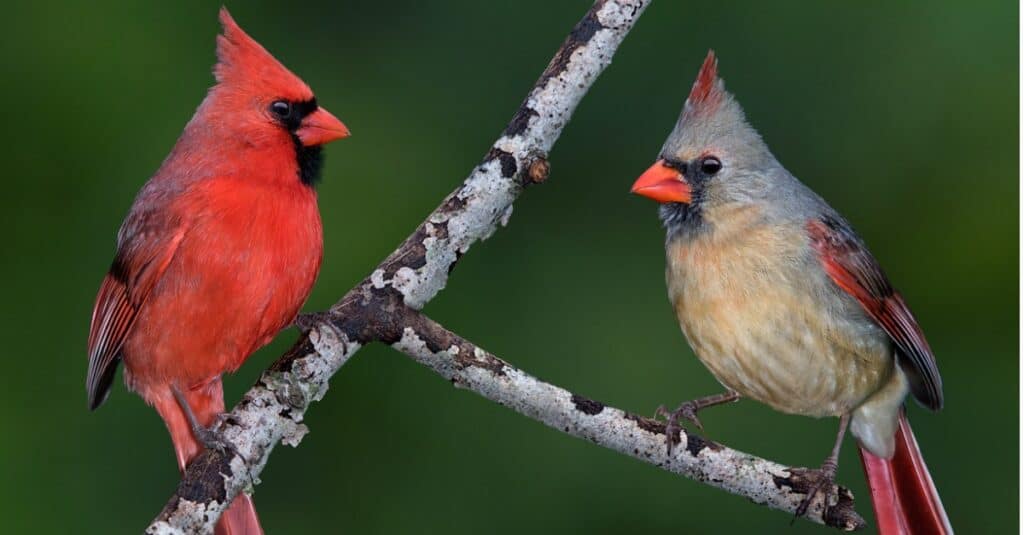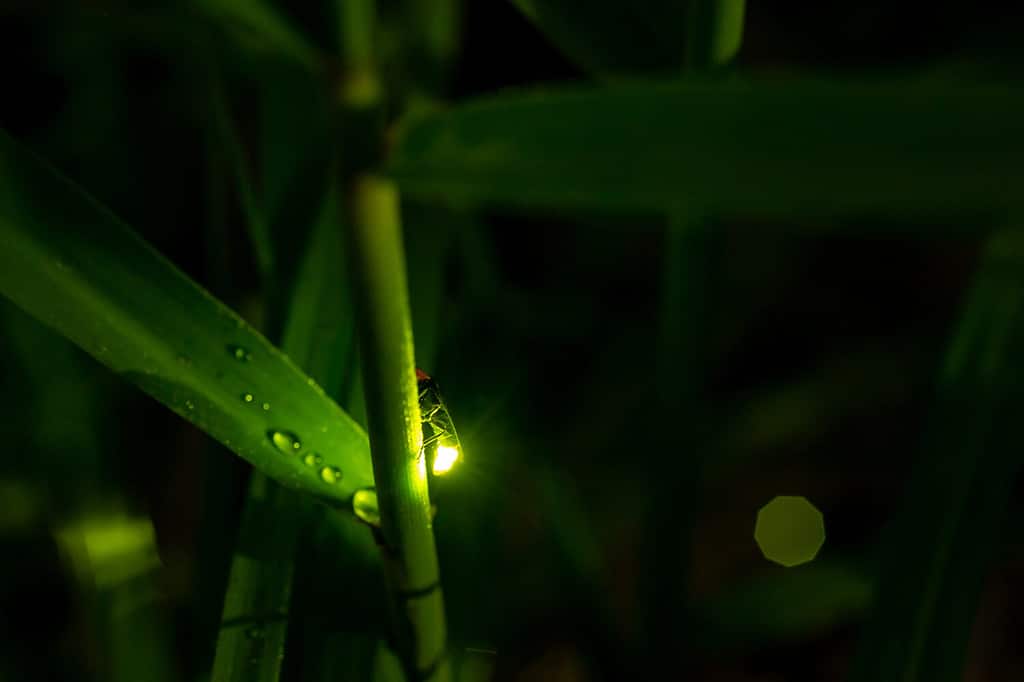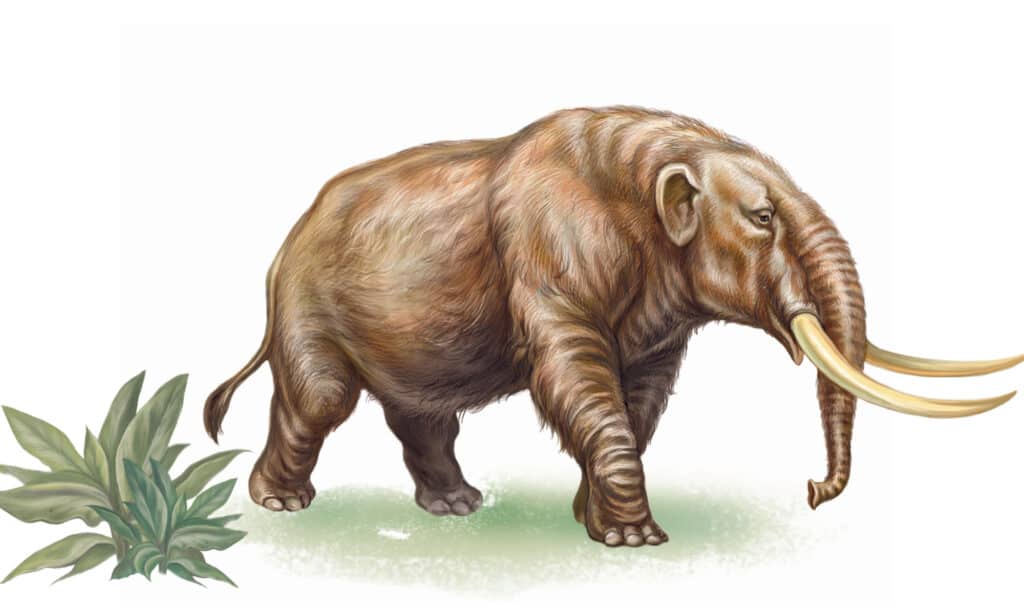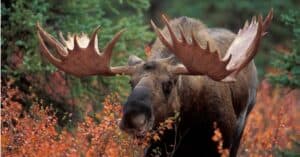
Located in the midwestern United States, Indiana is known for its rolling hills, quaint towns, bustling cities, picturesque countryside, and rich culture. Like the state itself, the official state animals of Indiana are a diverse and colorful representation of Indiana’s natural history and culture. Each representative species has its own unique story to tell, highlighting the range of wildlife that calls Indiana home. So, let’s dive in and check out the three official state animals of Indiana!
1. State Bird: Northern Cardinal (Cardinalis cardinalis)
The northern cardinal became the official state bird of Indiana in 1933. These beautiful red birds can be found in Indiana all year round. Northern Cardinals are a common sight all over the state, living in thickets, woodlands, and even your own backyard! If you want to attract cardinals, just put out a bird feeder with some tasty safflower or sunflower seeds.
Male birds are especially easy to spot, as they are decked out in eye-catching bright red feathers and striking jet-black masks. Female birds, on the other hand, rock a more understated style, with beautiful buffy brown or reddish olive coloring. They have gray masks on their faces, and their wings, tails, and crests are a rich, reddish color. Both male and female birds have an impressive crest of feathers on their heads, almost like a feathery mohawk.
Cardinals are very vocal birds and sing almost all year round. Their unique songs are a mix of warbles and whistles. Northern cardinals are actually rather good mimics as well, and can even copy the calls of other birds! These harmonious scarlet birds are also quite social. During the cold winter months, you can often spot them gathering in large flocks.

Northern cardinal males have much more red on their bodies than females do.
©Cathy Keifer/Shutterstock.com
2. State Insect: Say’s Firefly (Pyractomena angulata)
Say’s firefly became the official state insect of Indiana due to the efforts of a young grade-schooler from Cumberland Elementary School. When she was in second grade, Kayla Xu discovered that Indiana didn’t have an official state insect. Four years later, Kayla and her classmates spoke before the Senate’s public policy committee, and in 2018 Say’s firefly became the official state insect of Indiana.
Although they are called fireflies, Say’s fireflies are actually a special type of beetle that utilizes a complex chemical reaction that makes them glow! They use this amber-orange bioluminescent light to attract mates at night. The light helps them to communicate with each other, and the way they do it is rather unique. Male fireflies flash their lights in a series of rapid pulses, followed by a short pause. Female fireflies, on the other hand, flash their lights in one long pulse. These special flashing patterns help male and female fireflies find each other in the pitch-black darkness of night.
Indiana’s residents have enjoyed seeking out these beautiful summer light displays. Not only are Say’s fireflies native to Indiana, but Thomas Say, the “Father of American Entomology”, also lived in Indiana and was the first to name and describe Say’s firefly in 1824. Say’s fireflies are important in Indiana and help to keep insect populations under control.

Say’s firefly is sometimes also known as the angled candle firefly.
©anko70/Shutterstock.com
3. State Fossil: Mastodon (Mammut americanum)
In 2022, the mastodon became the official state fossil of Indiana. Mastodons were gigantic mammals that lived during the Ice Age. They looked a lot like elephants, but with their own unique differences. For example, mastodons had flat skulls and smaller ears, and they were a bit shorter than today’s modern elephants. They used their long and curved tusks to dig for food and fight against predators. Although mastodons had a very intimidating presence, these giant beasts were herbivores and only ate plants.
Mastodons once roamed all over the state of Indiana. Fossils of these ginormous creatures have been discovered in almost every county in the state! However, the most famous of Indiana’s mastodons is one affectionately known as “Fred”. You can see Fred’s skeleton on display at the Indiana State Museum today. The preserved skeleton is over 13,000 years old, measuring 25 feet long and 9 feet tall. Even just his skull weighs over 300 pounds!

Mastodons were similar to modern elephants in size, but their bodies were lower to the ground.
©Liliya Butenko/Shutterstock.com
Summary of Indiana’s Official State Symbols
In addition to the three official state animals of Indiana, this midwestern state also has a few other official symbols pulled from the natural world:
| Title | Name |
|---|---|
| State Bird | Northern cardinal (Cardinalis cardinalis) |
| State Insect | Say’s firefly (Pyractomena angulata) |
| State Fossil | Mastodon (Mammut americanum) |
| State Flower | Peony (Paeonia) |
| State Tree | Tulip Tree (Liriodendron tulipifera) |
| State River | Wabash River |
| State Stone | Salem Limestone (also known as Indiana or Bedford limestone) |
Thank you for reading! Have some feedback for us? Contact the AZ Animals editorial team.








